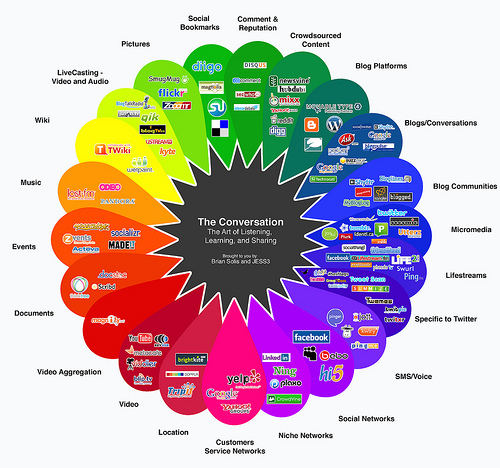Solvation Blog
Five Tips for Using New Media in the Classroom
Posted February 24, 2014
New media doesn’t have to be overwhelming. Embrace the latest technologies and implement them in innovative ways throughout the school year, by utilizing these top tips from across the web.
1. Use a hashtag to facilitate guest speaker discussions.
“Encouraging students to engage with guest speakers via Twitter makes them more engaged with the platform and prepares them to raise important questions online,” says Jess Fee for Mashable. A great suggestion in the article is to then ask students to create a Storify summary based on their classmates' tweets on a certain deadline to further the discussion.
Pernille Ripp says that blogging with her students has been one of the most enriching educational experiences she’s had. One key to success? Blogging challenges. “This was my way of finding out what they really thought about fourth grade, their dreams, their hopes and their lives. The kids always wondered what the next challenge would be and looked forward to writing them,” she says.
3. Teach the Importance of Privacy
In a three part series on social media in the classroom on WebRoot, Jolynn Dellinger’s program manager of Data Privacy Day at The Privacy Project, shares a few data privacy tips for the education community. “Educate your students about the importance of privacy and security by including it in your curricula or inviting experts to speak to your class,” she says. “Keep the dialogue going about the technologies that your students are using to keep your education efforts current and relevant.”
“Using and showing YouTube clips, then having your own classroom discussion about the clips, is an incredibly robust classroom approach,” says Chris O’Neal in an Edutopia article on Online Interactivity for Educators. But to take it one step further and assist students in the creation of their own videos that can be uploaded to the site is “an even more powerful application.” Don’t just sit on the sidelines, get in the game.
5. Keep everything in the open
Facebook can be an excellent platform to interact with your students, but do so with a separate teacher profile and by creating a closed class group. The Professional Learning Board says to avoid using Facebook chat or sending students’ messages in private. By keeping things in the open, “it will protect you against any accusations.” They suggest that if a student messages you in private, to post on his/her wall instead. And invite parents to be part of the group, so they can follow along as kids post their projects and even add to the conversation.

Graphic by Brian Solis


 Bruce McAskill, PhD, is an educational consultant and a high school math and science teacher in Victoria BC. He is currently
developing solution sets in his spare time for more textbooks!
Bruce McAskill, PhD, is an educational consultant and a high school math and science teacher in Victoria BC. He is currently
developing solution sets in his spare time for more textbooks!